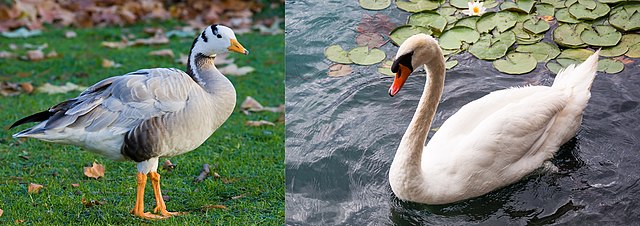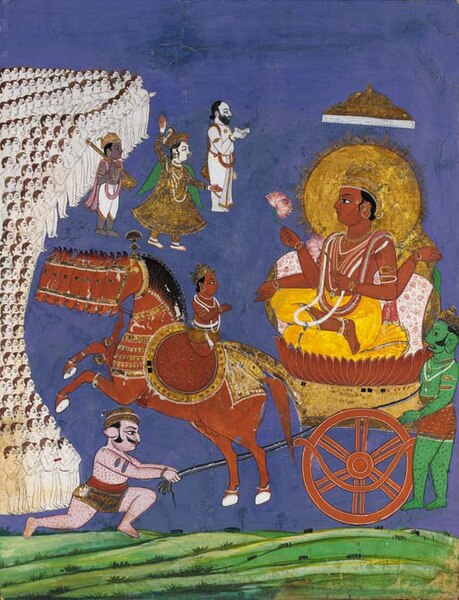The haṃsa is an aquatic migratory bird, referred to in ancient Sanskrit texts which various scholars have interpreted as being based on the goose, the swan, or even the flamingo. Its image is used in Indian and Southeast Asian culture as a spiritual symbol and a decorative element. It is also used in a metaphorical sense with the bird attributed with the mythical ability to extract milk from a mixture of milk and water or good from evil. In Hindu iconography, hamsa is the vahana of Brahma, Gayatri, Saraswati, and Vishvakarma.
Hamsa is thought to refer to the bar-headed goose found in India (left) or a species of swan.
A tile with a hamsa bird with flowery tail from Sri Lanka, c. 12th century CE
Himachal Pradesh painting (c. 1700 CE)
South Indian painting (c. 1825 CE)
Vahana or vahanam denotes the being, typically an animal or mythical entity, a particular Hindu deity is said to use as a vehicle. In this capacity, the vahana is often called the deity's "mount". Upon the partnership between the deity and his vahana is woven much iconography and Hindu theology. Deities are often depicted riding the vahana. Other times, the vahana is depicted at the deity's side or symbolically represented as a divine attribute. The vahana may be considered an accoutrement of the deity: though the vahana may act independently, they are still functionally emblematic or even syntagmatic of their "rider". The deity may be seen sitting or standing on the vahana. They may be sitting on a small platform, or riding on a saddle or bareback.
The eight Matrikas riding different vahanas like (top row, second from left to right) Garuda, a peacock, Nandi bull, a hamsa (goose/swan); (bottom row, from left) buffalo, elephant and lion
Image: Thajavur Ganesha
Image: Suryatanjore
Image: Garuda by Hyougushi in Delhi








